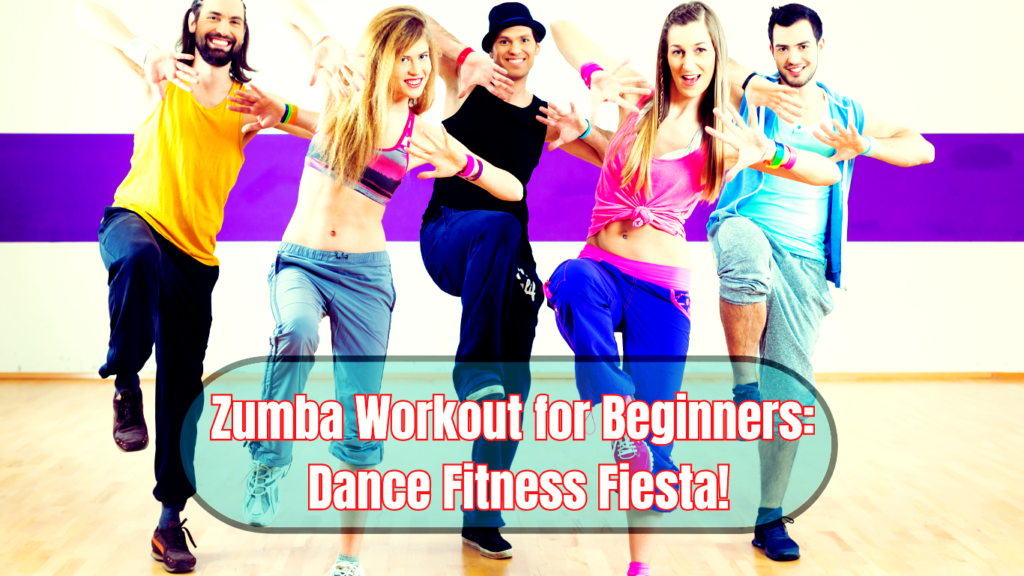Best Martial Arts for Fitness: A Gateway to a Healthier You
In this article, discover the Best Martial Arts for Fitness and how they can supercharge your workouts, boost your health, and energize your entire fitness routine.
Did you know that martial arts have seen a significant surge in popularity, not just as a competitive sport but as a go-to fitness regimen? In fact, martial arts classes have become some of the most sought-after workouts in gyms and fitness centers across the globe. The allure of martial arts is not merely in the combat skills they teach but in the comprehensive physical conditioning they offer. In this article, we’ll dive into the Best Martial Arts for Fitness, shedding light on how they can transform your fitness journey.
The purpose of this article is to provide you with a detailed understanding of how different martial arts can serve as excellent fitness routines. By the end, you will have a clear idea of which martial arts discipline might be the best fit for your fitness goals, whether you’re looking to lose weight, gain strength, improve flexibility, or simply add some excitement to your workout routine.
Martial arts are incredibly diverse, encompassing a range of styles and techniques from around the world. Each style has its unique approach and fitness benefits. Whether it’s the explosive movements of Taekwondo, the flowing techniques of Aikido, the intense conditioning of Muay Thai, or the strategic workouts of Brazilian Jiu-Jitsu, there’s a martial art that can cater to your fitness needs. Let’s briefly touch on a few of these to set the stage for a more in-depth exploration.

Taekwondo, originating from Korea, is known for its high-flying kicks and agility drills, making it a fantastic option for those looking to improve their cardiovascular health and leg strength. Muay Thai, often referred to as the “Art of Eight Limbs,” focuses on using fists, elbows, knees, and shins, offering a full-body workout that is both intense and rewarding. Brazilian Jiu-Jitsu, a ground-based grappling art, emphasizes technique over brute strength, providing an excellent workout for improving flexibility, endurance, and strategic thinking. Aikido, with its emphasis on fluid motion and balance, can enhance your flexibility and mental focus.
Each of these martial arts offers unique benefits, making them some of the Best Martial Arts for Fitness. By incorporating martial arts into your fitness routine, you can achieve a well-rounded workout that not only improves your physical health but also boosts your mental well-being. As we progress through this article series, we will delve deeper into each of these martial arts, exploring their specific benefits, what to expect in a typical class, and how they can help you reach your fitness goals.
Subscribe And Get Our Free E-Book:Unlocking The Power Of Nutrition-Supplements, Substitutes, and Superfoods!
For now, it’s important to recognize that the world of martial arts is vast and varied. No matter what your current fitness level or personal goals are, there is likely a martial art that can help you get there. The key is to find the one that resonates with you and aligns with your fitness aspirations. So, whether you’re a seasoned athlete looking to switch things up or a beginner taking your first steps into the world of fitness, exploring the Best Martial Arts for Fitness could be the game-changer you’ve been looking for.
The Benefits
The allure of martial arts extends far beyond the allure of action-packed moves seen in movies. Martial arts offer a holistic approach to fitness, making them some of the Best Martial Arts for Fitness. This segment will explore the extensive benefits martial arts can bring to your fitness journey, ensuring a comprehensive workout that caters to both the body and mind.
Holistic Workout: One of the most compelling reasons to consider martial arts is the full-body workout they provide. Unlike conventional workouts that may focus on specific muscle groups, martial arts engage virtually every part of your body. Cardiovascular health is significantly enhanced as martial arts involve continuous movement, high-intensity drills, and aerobic exercises that get your heart pumping. These activities not only increase stamina but also improve overall heart health. Strength training is another key component, as many martial arts require repetitive movements that build muscle strength and endurance. Techniques such as punches, kicks, and holds target various muscle groups, ensuring balanced development.
Flexibility is another vital aspect of martial arts. Many martial arts, like Taekwondo and Aikido, emphasize dynamic and static stretching, which enhances your range of motion and reduces the risk of injury. Additionally, martial arts promote mental training, improving your focus, discipline, and resilience. The necessity to learn and perfect complex techniques requires concentration and mental acuity, fostering a sharper mind.

Weight Management: For those looking to manage their weight, martial arts can be incredibly effective. The high-intensity nature of martial arts training sessions helps burn a significant number of calories. Depending on the intensity and duration of your training, you can burn anywhere from 500 to 1000 calories per hour. This calorie-burning effect, combined with the muscle-building benefits, makes martial arts an excellent choice for weight loss and weight management. Furthermore, the discipline learned through martial arts often translates into better dietary and lifestyle choices, supporting a healthier overall approach to weight management.
Mental Health: The mental benefits of martial arts are just as profound as the physical ones. Regular practice can lead to significant stress relief, as the physical exertion helps release endorphins, the body’s natural mood elevators. The focused nature of martial arts training also provides a mental break from daily stresses, allowing you to reset and recharge. Improved focus and discipline are natural byproducts of martial arts practice. Learning and mastering techniques require patience and concentration, which can enhance your ability to focus in other areas of life.
Additionally, martial arts teach self-control and emotional regulation, helping practitioners manage anger and frustration more effectively. The structured environment of martial arts classes promotes a sense of order and control, contributing to a calmer and more centered mindset. Over time, the discipline and resilience developed through martial arts can lead to improved self-esteem and confidence.
Self-Defense Skills: Beyond the fitness and mental health benefits, martial arts provide the invaluable skill of self-defense. Learning how to protect oneself can boost confidence and provide peace of mind. The techniques taught in martial arts classes are practical and effective, designed to be used in real-life situations. This aspect of martial arts training not only enhances physical fitness but also equips you with the knowledge and skills to stay safe in potentially dangerous situations.
The combination of these benefits makes martial arts an exceptional choice for anyone looking to improve their overall health and well-being. When considering the Best Martial Arts for Fitness, it’s essential to recognize how these practices integrate various aspects of physical and mental health into a single, cohesive workout regimen.
The holistic workout provided by martial arts ensures that you’re not only building muscle and improving cardiovascular health but also enhancing flexibility and mental strength. The intense, calorie-burning sessions aid in weight management, helping you achieve and maintain a healthy weight. The mental benefits, including stress relief, improved focus, and enhanced discipline, contribute to a more balanced and fulfilling life. Finally, the practical self-defense skills you acquire add an extra layer of value to your training, ensuring that you are better prepared to protect yourself if the need arises.
As we continue to explore the Best Martial Arts for Fitness, it becomes clear that the true strength of martial arts lies in their ability to offer a well-rounded approach to health and fitness. Whether you are aiming to improve your physical condition, boost your mental health, manage your weight, or learn self-defense, martial arts provide a comprehensive solution that can meet a wide range of needs and goals. By embracing the practice of martial arts, you open the door to a healthier, more balanced, and empowered version of yourself.
Chart: Comparing Martial Arts for Fitness Benefits
| Martial Art | Key Fitness Benefits | Ideal For | Intensity Level | Accessibility |
|---|---|---|---|---|
| Taekwondo | Cardiovascular health, leg strength, agility | Improving cardiovascular health, leg strength, and flexibility | High | Widely available; numerous schools |
| Muay Thai | Full-body workout, strength, endurance, weight loss | Weight loss, full-body conditioning, strength building | Very High | Widely available; numerous schools |
| Brazilian Jiu-Jitsu | Flexibility, endurance, strategic strength | Building functional strength and endurance, strategic thinking | High | Moderate availability; specialized schools |
| Aikido | Flexibility, balance, mental focus | Enhancing flexibility, balance, and mental focus | Moderate | Moderate availability; specialized schools |
| Tai Chi | Flexibility, balance, mental relaxation | Gentle introduction to movement, improving balance and mental focus | Low | Widely available; many local classes |
| Krav Maga | Self-defense, cardiovascular health, strength | Practical self-defense, intense workouts for cardiovascular health | Very High | Moderate availability; specialized schools |
| Karate | Strength, flexibility, cardiovascular health | Building strength, flexibility, and overall fitness | High | Widely available; numerous schools |
Enhancements to the Article:
- Visual Appeal: Adding the chart provides a quick, visual reference that complements the article’s text, making it easier for readers to compare and contrast the benefits of each martial art.
- Tailored Recommendations: The chart helps readers identify which martial art aligns with their personal fitness goals, such as weight loss, strength building, or flexibility improvement.
- Accessibility Insights: The inclusion of accessibility information helps readers understand where they can find classes and how readily available each martial art is in different regions.
- Intensity Levels: By indicating the intensity level, the chart helps readers choose a martial art based on their current fitness level and willingness to engage in high-intensity workouts.
Best Martial Arts for Fitness: Choosing the Right One for You
When it comes to selecting the Best Martial Arts for Fitness, several factors come into play. Each martial art offers unique benefits, and your choice should align with your personal fitness goals, current physical condition, and the accessibility of classes in your area. This section will guide you through these criteria, helping you make an informed decision.
Top 5 Best Arts For Fitness And Strength
Personal Goals: The first step in choosing the right martial art is understanding your fitness objectives. Different martial arts cater to various goals such as weight loss, muscle building, cardiovascular improvement, or enhancing flexibility. For instance, if your primary goal is weight loss, martial arts that involve high-intensity workouts and significant calorie burning would be ideal. Muay Thai is an excellent choice in this regard, as it involves rigorous training routines that engage the entire body, ensuring a high caloric expenditure. The continuous movement, powerful strikes, and dynamic drills in Muay Thai can help you shed pounds efficiently.
If your focus is on building strength and endurance, consider martial arts that incorporate resistance training and full-body workouts. Brazilian Jiu-Jitsu is particularly effective for this purpose. The grappling and ground fighting techniques require you to use and develop your strength and stamina. Training in Brazilian Jiu-Jitsu involves using your own body weight and that of your opponent, which helps in building functional strength and improving endurance.
For those aiming to enhance their flexibility and balance, martial arts like Aikido and Taekwondo are beneficial. Aikido emphasizes fluid movements and joint locks, which can improve your flexibility and coordination. Taekwondo, known for its high kicks and dynamic footwork, also promotes flexibility and agility. Practicing these martial arts can help you achieve a more limber and balanced body.
Physical Condition: Your current physical condition and fitness level are crucial considerations when choosing the Best Martial Arts for Fitness. Some martial arts are more demanding and may require a higher baseline of fitness, while others can be adapted for beginners or those with physical limitations. If you are new to fitness or have any physical concerns, starting with a martial art that offers a gentler introduction to movement and conditioning is wise. Tai Chi, for example, is a martial art that focuses on slow, controlled movements and is known for its gentle approach. It’s an excellent choice for improving flexibility, balance, and mental focus without putting excessive strain on the body.
For those who are already fit and seeking a more challenging regimen, martial arts like Muay Thai or Krav Maga provide intense workouts that push your physical limits. These disciplines involve high-intensity training sessions that can significantly enhance cardiovascular health, strength, and endurance. However, it’s essential to ensure that you are physically prepared for the demands of these martial arts to prevent injury and maximize benefits.
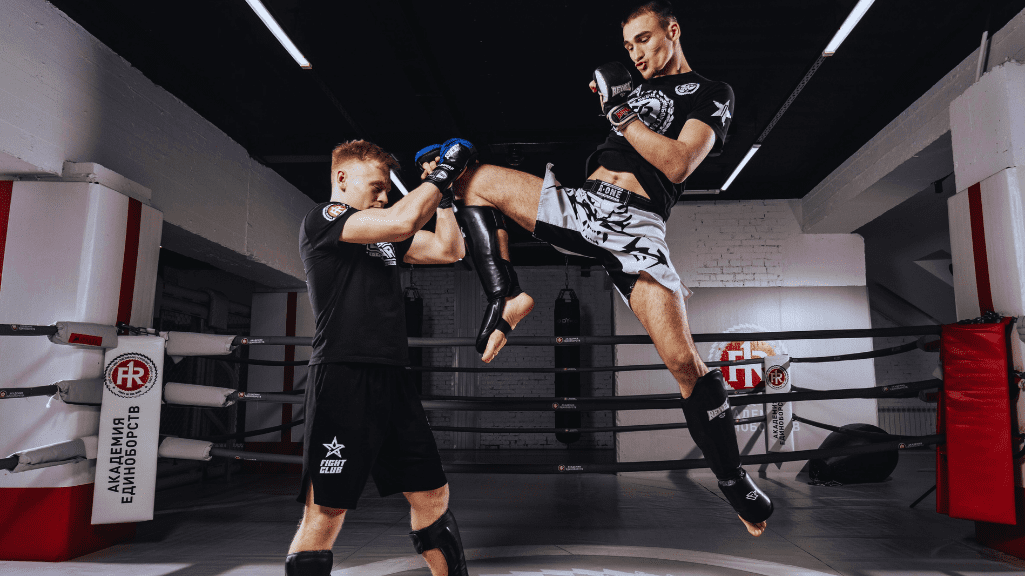
Accessibility: The availability of martial arts classes, qualified instructors, and appropriate facilities in your area is another vital factor. While some martial arts are widely practiced and have numerous schools and instructors, others may be less accessible depending on your location. Research the options available in your vicinity. Look for reputable schools with experienced instructors who can provide quality training. Taekwondo and Karate are widely practiced martial arts with numerous schools and instructors available in many regions, making them accessible options for beginners.
Additionally, consider the schedule and format of classes. Some martial arts schools offer flexible class times, private lessons, and online training sessions, which can accommodate different lifestyles and commitments. If you have a busy schedule, finding a school that offers evening or weekend classes might be beneficial. Accessibility also involves the community aspect of martial arts. Joining a martial arts school with a supportive and welcoming community can enhance your training experience, keeping you motivated and engaged.
Choosing the Best Martial Arts for Fitness is a highly individual decision that should be based on a combination of your personal fitness goals, current physical condition, and the accessibility of quality instruction. By aligning your choice with these criteria, you can find a martial art that not only meets your fitness needs but also fits seamlessly into your lifestyle.
Selecting the Best Martial Arts for Fitness involves evaluating your personal fitness goals, considering your physical condition, and assessing the accessibility of martial arts training in your area. Whether you aim to lose weight, build strength, enhance flexibility, or improve endurance, there is a martial art that can help you achieve your objectives. Furthermore, ensuring that the martial art you choose is suited to your current fitness level and is readily available will set you up for success on your fitness journey. Embracing the practice of martial arts can lead to a healthier, more balanced life, providing comprehensive benefits that extend beyond physical fitness to encompass mental well-being and practical self-defense skills.
Top Martial Arts for Fitness
When it comes to the Best Martial Arts for Fitness, there are several disciplines that stand out for their comprehensive fitness benefits. In this section, we’ll delve into some of the top martial arts that can enhance your physical and mental well-being. We will cover Muay Thai, Brazilian Jiu-Jitsu, Taekwondo, Boxing, Capoeira, and Krav Maga, exploring their histories, fitness benefits, and practical tips for getting started.
Muay Thai
Overview: Originating in Thailand, Muay Thai is known as the “Art of Eight Limbs” because it utilizes punches, kicks, elbows, and knee strikes. This combat sport has a rich history dating back centuries and is deeply ingrained in Thai culture. It is not only a sport but also a vital part of Thai heritage.
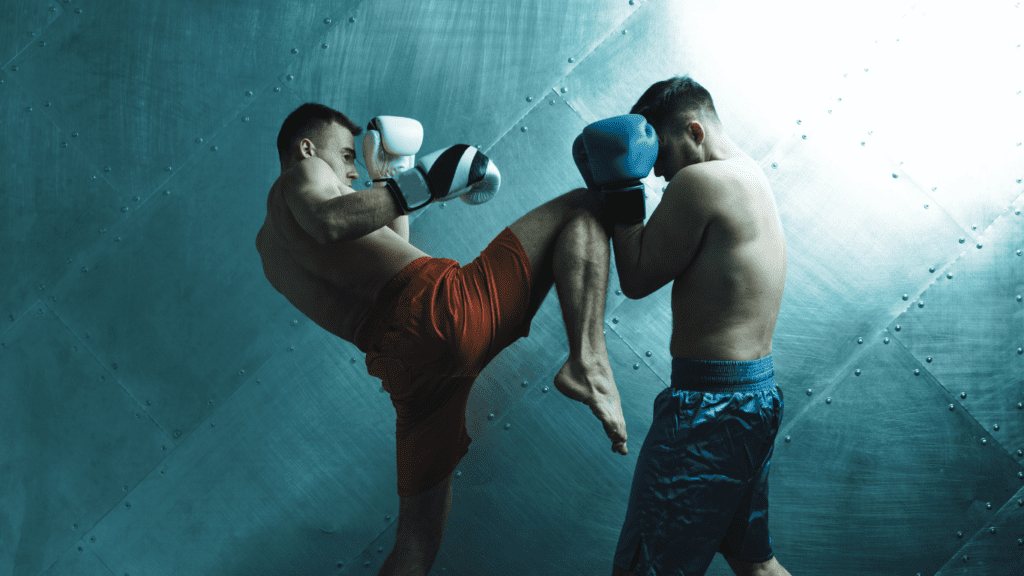
Fitness Benefits: Muay Thai offers an excellent cardiovascular workout due to its high-intensity nature. The continuous movement and combination of strikes improve heart health and stamina. The various techniques also enhance strength and endurance, particularly in the lower body and core. Additionally, the dynamic movements involved in Muay Thai can significantly improve flexibility.
Practical Tips: To get started with Muay Thai, look for a reputable gym with experienced instructors. Classes typically begin with a warm-up, followed by technique drills, pad work, and conditioning exercises. Essential gear includes hand wraps, boxing gloves, shin guards, and comfortable workout attire. Beginners should focus on learning the basic strikes and footwork before progressing to more advanced techniques.
Brazilian Jiu-Jitsu (BJJ)
Overview: Developed in Brazil, Brazilian Jiu-Jitsu (BJJ) focuses on ground fighting and submission holds. Its principles are based on leverage and technique, allowing smaller individuals to defend against larger opponents. BJJ has gained widespread popularity for both self-defense and sport.
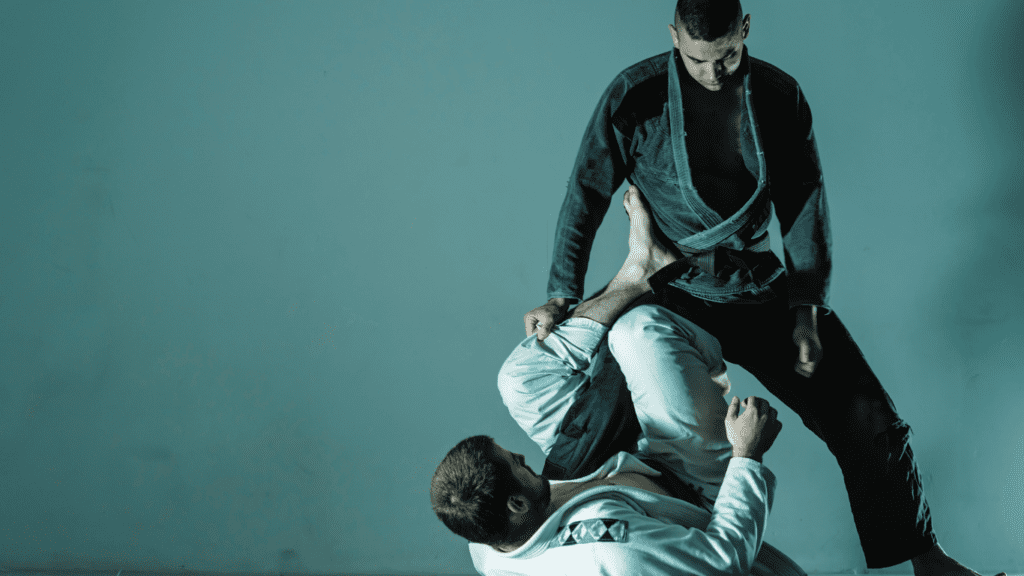
Fitness Benefits: BJJ is exceptional for building core strength due to the grappling and ground control techniques. It also enhances flexibility as practitioners learn to move their bodies in various ways to escape holds and apply submissions. Mentally, BJJ sharpens acuity and problem-solving skills, as it requires quick thinking and strategic planning.
Practical Tips: To start BJJ, find a gym that offers beginner-friendly classes and has experienced instructors. Classes typically involve a warm-up, technique drills, and sparring sessions (known as rolling). Basic gear includes a BJJ gi (uniform), a belt, and a mouthguard. As a beginner, focus on fundamental positions and escapes to build a solid foundation.
Taekwondo
Overview: Taekwondo originated in Korea and is known for its emphasis on high, fast kicks and dynamic footwork. It is one of the most popular martial arts globally and is also an Olympic sport. Taekwondo combines traditional martial arts techniques with modern athletic training.
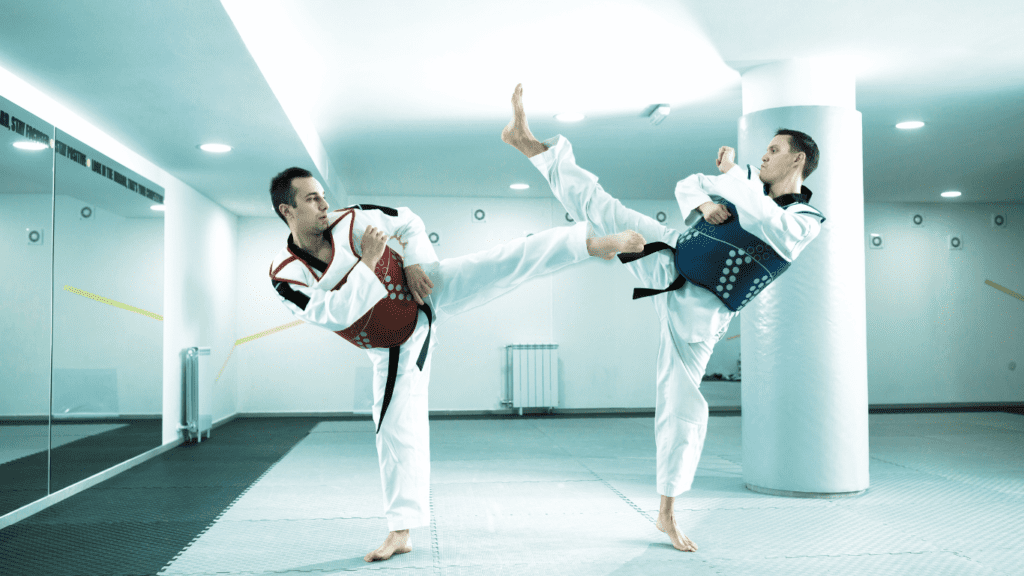
Fitness Benefits: Taekwondo is excellent for cardiovascular health due to the aerobic nature of its training routines. The high kicks and stances build leg strength and improve agility. Practitioners also develop enhanced balance and coordination from the intricate footwork and kicking techniques.
Practical Tips: Look for a Taekwondo school that is certified by a recognized governing body, such as the World Taekwondo Federation (WTF). Classes generally start with a warm-up, followed by stretching, technique drills, and sparring. Necessary equipment includes a uniform (dobok), protective gear for sparring, and a belt. Beginners should concentrate on mastering basic kicks, blocks, and forms (patterns).
Boxing
Overview: Boxing is a sport with ancient roots and has evolved into a popular form of fitness training. It involves striking with the fists while maintaining defensive techniques. Boxing is renowned for its straightforward approach and rigorous training methods.
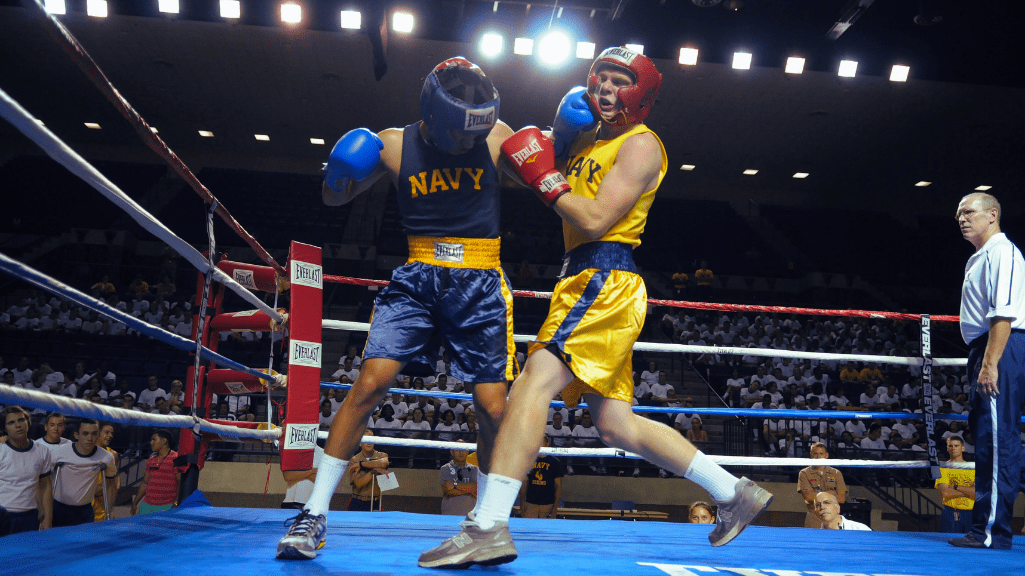
Fitness Benefits: Boxing is highly effective for cardiovascular fitness, as the training involves intense aerobic exercises like jumping rope and shadowboxing. It builds upper body strength through repeated punching and enhances coordination and reflexes. Boxing training also improves mental toughness and focus.
Practical Tips: To start boxing, find a gym that offers classes for beginners and has a professional trainer. A typical class includes a warm-up, technique drills, bag work, and conditioning exercises. Essential gear consists of hand wraps, boxing gloves, a mouthguard, and comfortable athletic wear. Beginners should focus on basic punches, defensive movements, and footwork.
Capoeira
Overview: Capoeira is an Afro-Brazilian martial art that combines elements of dance, acrobatics, and music. It was developed by African slaves in Brazil as a form of resistance and cultural expression. Capoeira is characterized by its fluid, dance-like movements and rhythmic music.
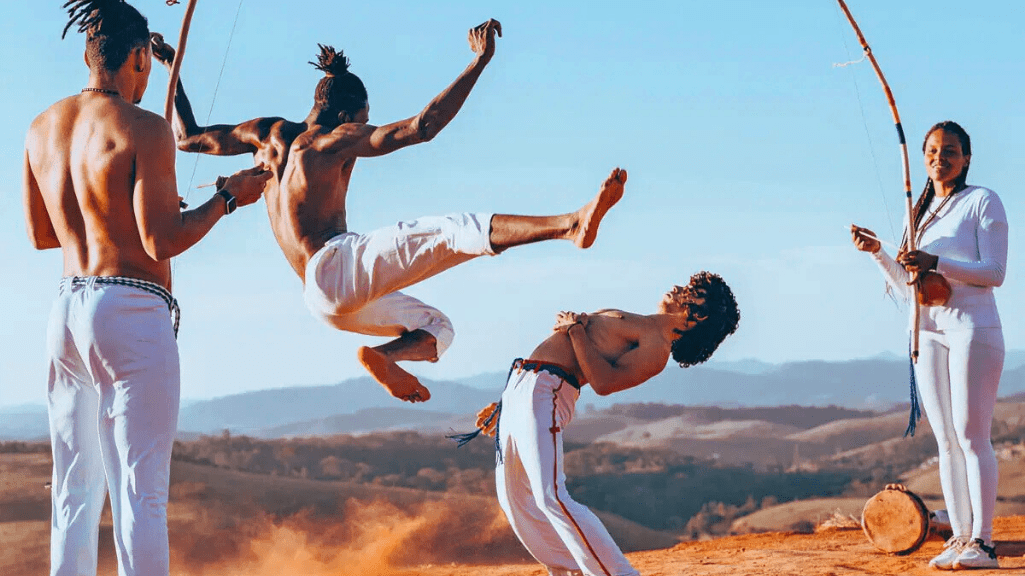
Fitness Benefits: Capoeira is excellent for flexibility and rhythm, as it involves a variety of dynamic movements and kicks. The constant motion and acrobatic elements build overall strength and improve balance. Capoeira also enhances cardiovascular health and coordination.
Practical Tips: To begin Capoeira, find a school that offers classes taught by experienced mestres (masters). Classes typically start with a warm-up, followed by technique drills, partner exercises, and playing in the roda (circle). Basic gear includes comfortable athletic wear that allows for full range of motion. Beginners should learn basic movements like the ginga (swaying step) and simple kicks.
Krav Maga
Overview: Krav Maga is an Israeli martial art designed for real-world self-defense. It emphasizes practical techniques for defending against various types of attacks, including armed and unarmed threats. Krav Maga is known for its efficiency and direct approach.

Fitness Benefits: Krav Maga offers a full-body workout that enhances strength, endurance, and agility. The intense training sessions provide excellent cardiovascular benefits and help develop practical self-defense skills. Additionally, Krav Maga training can be a great way to relieve stress.
Practical Tips: To get started with Krav Maga, look for a certified instructor or school with a strong reputation. Classes usually involve a warm-up, technique drills, and realistic self-defense scenarios. Essential gear includes comfortable athletic wear, protective equipment like groin guards and mouthguards, and training shoes. Beginners should focus on basic defensive techniques and situational awareness.
Choosing the Best Martial Arts for Fitness depends on your personal goals, physical condition, and the accessibility of classes in your area. Muay Thai, with its intense cardio and strength benefits, is perfect for those looking to lose weight and build endurance. Brazilian Jiu-Jitsu is ideal for enhancing core strength and mental acuity through grappling. Taekwondo emphasizes cardiovascular health, leg strength, and agility, making it great for improving overall fitness. Boxing offers cardiovascular fitness, upper body strength, and coordination, while Capoeira combines flexibility, rhythm, and strength in a unique, cultural context. Krav Maga provides a full-body workout and practical self-defense skills, catering to those looking for both fitness and self-protection.
By understanding the history, fitness benefits, and practical tips for each martial art, you can make an informed decision about which one aligns best with your fitness goals and lifestyle. Embrace the journey and discover how the Best Martial Arts for Fitness can transform your health and well-being.
Best Martial Arts for Fitness: Integrating Martial Arts into Your Fitness Routine
Integrating martial arts into your fitness routine can transform your approach to health and exercise. Martial arts provide a comprehensive workout that improves physical and mental well-being. To maximize the benefits, it’s essential to combine martial arts training with other forms of exercise, create a balanced workout schedule, and pay attention to recovery and nutrition. Here’s how you can effectively integrate martial arts into your fitness routine.
Combining with Other Workouts: One of the key aspects of making the Best Martial Arts for Fitness part of your routine is to combine it with other workouts. This not only prevents monotony but also ensures a well-rounded fitness regimen. For instance, if you are practicing Muay Thai, you might want to complement it with strength training exercises. Weightlifting can enhance your power and endurance, which are crucial for powerful strikes and sustained rounds during sparring sessions. Focus on compound movements like squats, deadlifts, and bench presses to build overall strength.
For those involved in Brazilian Jiu-Jitsu, integrating yoga can be beneficial. Yoga enhances flexibility and balance, which are essential for effective grappling and ground control. Moreover, the mindfulness and breathing techniques learned in yoga can help improve your focus and mental clarity on the mat.
If you are training in Taekwondo, incorporating plyometric exercises can boost your explosive power and agility. Plyometrics, such as box jumps and burpees, mimic the dynamic movements of Taekwondo kicks and can enhance your performance during high-intensity drills.
For Boxing, cardio workouts like running or cycling can improve your stamina and cardiovascular endurance. Long-distance running helps build the aerobic capacity needed for extended bouts, while interval training can mimic the high-intensity bursts of energy required during matches.
Capoeira practitioners can benefit from bodyweight exercises and dance workouts. Bodyweight exercises such as push-ups, pull-ups, and dips build functional strength, while dance workouts improve rhythm and coordination, enhancing the fluidity of your Capoeira movements.
For those practicing Krav Maga, high-intensity interval training (HIIT) can be a great addition. HIIT workouts, which involve short bursts of intense exercise followed by brief rest periods, mirror the demanding nature of Krav Maga training and can enhance your overall conditioning and readiness for self-defense scenarios.
Scheduling and Consistency: Creating a balanced workout schedule is crucial for integrating the Best Martial Arts for Fitness into your routine. Consistency is key to seeing progress and reaping the benefits of your training. Start by determining how many days per week you can dedicate to martial arts training. A typical schedule might include two to three days of martial arts classes, interspersed with other forms of exercise.
For example, you might attend Muay Thai classes on Mondays and Wednesdays, with strength training on Tuesdays and Thursdays, and a cardio session on Friday. This approach allows for sufficient recovery time between intense martial arts sessions and complementary workouts.
If you are a Brazilian Jiu-Jitsu enthusiast, you might train BJJ on Mondays, Wednesdays, and Fridays, and incorporate yoga sessions on Tuesdays and Thursdays. This balance ensures you are not overloading your body with too much of one type of exercise and are promoting overall flexibility and recovery.
For Taekwondo practitioners, scheduling classes on Mondays, Wednesdays, and Fridays with plyometric and agility workouts on Tuesdays and Thursdays can provide a well-rounded approach to fitness. This routine helps build both the skill set and the physical attributes necessary for excelling in Taekwondo.
Boxing enthusiasts can train in boxing on Mondays, Wednesdays, and Fridays, with running or cycling on alternate days to boost cardiovascular endurance. This schedule ensures a mix of skill training and aerobic conditioning, vital for success in the ring.
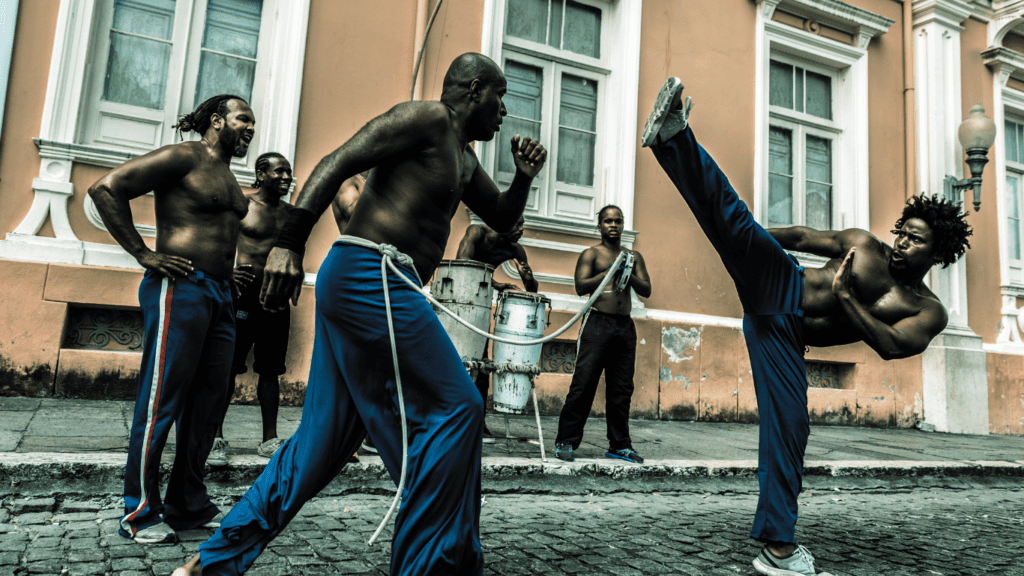
Capoeira practitioners might schedule classes on Mondays and Thursdays, with dance workouts and bodyweight exercises on other days. This blend of workouts maintains the rhythm and strength needed for Capoeira.
For Krav Maga trainees, attending classes on Mondays, Wednesdays, and Fridays, with HIIT sessions on Tuesdays and Thursdays, can keep your fitness level high and prepare you for the physical demands of Krav Maga.
Recovery and Nutrition: Recovery and proper nutrition are fundamental aspects of integrating the Best Martial Arts for Fitness into your routine. Martial arts training is intense and can take a toll on your body if not balanced with adequate recovery.
Ensure you are getting enough rest. Aim for at least seven to eight hours of sleep per night to allow your body to repair and rebuild. Incorporate rest days into your schedule to prevent overtraining and reduce the risk of injury. On rest days, focus on light activities such as stretching, walking, or gentle yoga to keep your body active without exerting too much strain.
Nutrition plays a critical role in supporting your martial arts training. A balanced diet rich in protein, complex carbohydrates, healthy fats, and plenty of fruits and vegetables provides the necessary fuel for your workouts and aids in recovery. Protein is essential for muscle repair and growth, so include sources like lean meats, fish, eggs, beans, and legumes in your diet.
Hydration is equally important. Drink plenty of water throughout the day, especially before, during, and after workouts. Staying hydrated helps maintain performance levels and supports overall health.
Consider supplementing your diet with essential nutrients that may be lacking. For instance, omega-3 fatty acids, found in fish oil, can help reduce inflammation and support joint health. A quality multivitamin can ensure you are meeting your daily nutritional needs.
Post-workout nutrition is also vital. Consuming a meal or snack with a good balance of protein and carbohydrates within 30 minutes of training can help replenish glycogen stores and kickstart muscle recovery. Options include a protein shake with a banana, a turkey sandwich on whole-grain bread, or a yogurt with berries.
Integrating martial arts into your fitness routine involves combining martial arts training with complementary workouts, creating a consistent and balanced schedule, and focusing on recovery and nutrition. By following these guidelines, you can fully harness the benefits of the Best Martial Arts for Fitness and achieve a well-rounded, sustainable approach to health and fitness. Whether you are drawn to the high-intensity workouts of Muay Thai or the strategic, grappling-focused sessions of Brazilian Jiu-Jitsu, the key is to maintain balance and listen to your body, ensuring a holistic and rewarding fitness journey.
Martial Arts Comparison Chart
| Martial Art | Primary Fitness Benefits | Key Gear Required | Typical Workouts | Best For |
|---|---|---|---|---|
| Muay Thai | Cardiovascular endurance, lower body strength, flexibility | Hand wraps, boxing gloves, shin guards | High-intensity striking, pad work, conditioning | Building endurance, strength, and flexibility |
| Brazilian Jiu-Jitsu (BJJ) | Core strength, flexibility, mental acuity | BJJ gi, belt, mouthguard | Grappling, ground control, sparring (rolling) | Core strength, strategic thinking, and grappling skills |
| Taekwondo | Cardiovascular health, leg strength, agility | Dobok, protective sparring gear, belt | High kicks, stances, technique drills, sparring | Improving agility, leg strength, and cardiovascular health |
| Boxing | Cardiovascular fitness, upper body strength, coordination | Hand wraps, boxing gloves, mouthguard | Shadowboxing, bag work, sparring, conditioning | Cardiovascular fitness, upper body strength, coordination |
| Capoeira | Flexibility, rhythm, overall strength | Comfortable athletic wear | Dance-like movements, acrobatics, partner exercises | Flexibility, rhythm, and balance |
| Krav Maga | Full-body strength, endurance, agility, stress relief | Athletic wear, protective gear (groin guard, mouthguard) | Self-defense scenarios, intense drills, technique practice | Practical self-defense, full-body conditioning |
Highlights and Recommendations
- Muay Thai: Ideal for those who enjoy high-intensity workouts that build endurance and strength while improving flexibility. It’s excellent for those looking to lose weight and enhance cardiovascular health.
- Brazilian Jiu-Jitsu (BJJ): Perfect for individuals interested in building core strength and developing strategic thinking through grappling. The mental challenge of BJJ complements the physical workout, making it a well-rounded choice for fitness and mental acuity.
- Taekwondo: Best suited for those focusing on cardiovascular health and agility, with a strong emphasis on leg strength and precise techniques. Taekwondo’s dynamic kicks and stances are great for improving overall fitness.
- Boxing: Excellent for building upper body strength and coordination, boxing also offers a great cardiovascular workout. Its straightforward approach to training makes it accessible for beginners and those looking to improve physical fitness and mental toughness.
- Capoeira: A unique martial art that combines dance, acrobatics, and music. It’s great for those who enjoy a fluid, rhythmic workout that enhances flexibility, balance, and overall strength.
- Krav Maga: Ideal for those seeking practical self-defense skills coupled with a comprehensive full-body workout. Krav Maga’s emphasis on real-world scenarios and high-intensity training makes it a robust choice for fitness and personal safety.
Common Misconceptions and FAQs
When considering the Best Martial Arts for Fitness, many people are hesitant due to various misconceptions and unanswered questions. It’s important to address these concerns to help more individuals appreciate the benefits of incorporating martial arts into their fitness routines. Let’s debunk some common myths and provide answers to frequently asked questions.
Addressing Misconceptions
One of the most pervasive misconceptions about martial arts is that they are too difficult or only suitable for the young and exceptionally fit. While martial arts can indeed be challenging, they are also incredibly adaptable and inclusive. Best Martial Arts for Fitness offer something for everyone, regardless of age or fitness level.
Myth: Martial arts are only for young people.
Reality: People of all ages can practice martial arts. Many schools offer classes specifically designed for different age groups, including seniors. Martial arts training can be modified to suit the individual’s physical capabilities and limitations, ensuring that everyone can benefit.
Myth: You need to be in great shape to start martial arts.
Reality: Martial arts are a journey, not a destination. You don’t need to be in peak physical condition to start; the training itself will help you get there. Beginners are encouraged to progress at their own pace, gradually building strength, flexibility, and endurance.
Myth: Martial arts are violent and promote aggression.
Reality: While martial arts teach self-defense techniques, they also emphasize discipline, respect, and self-control. Most martial arts schools foster a supportive community where students learn to handle conflict calmly and respectfully.
Myth: Martial arts are too dangerous.
Reality: Safety is a top priority in reputable martial arts schools. Instructors are trained to teach techniques in a controlled and safe environment, and proper protective gear is used during sparring and drills to minimize the risk of injury.
Myth: Martial arts training is too expensive.
Reality: The cost of martial arts classes can vary, but many schools offer flexible payment plans, discounts, and family rates. Investing in your health and fitness can lead to long-term benefits that outweigh the initial costs.
Myth: You need previous experience to start martial arts.
Reality: Most people who join martial arts classes are beginners with no prior experience. Classes are designed to accommodate all skill levels, and beginners often start with the basics before moving on to more advanced techniques.
Myth: Martial arts are only for men.
Reality: Martial arts are for everyone. Many women practice martial arts and excel at them. Martial arts training can be empowering and help women build confidence and self-defense skills.
Myth: You have to compete to benefit from martial arts.
Reality: While some students may choose to compete, competition is not a requirement. Many people practice martial arts solely for the fitness, mental health benefits, and personal growth they offer.
Myth: Martial arts don’t provide a good workout.
Reality: Martial arts offer a full-body workout that combines cardiovascular exercise, strength training, flexibility, and mental focus. They are an excellent way to improve overall fitness.
Myth: It’s too late to start martial arts.
Reality: It’s never too late to start martial arts. Many people begin their martial arts journey later in life and find it to be a rewarding and transformative experience.
Best Martial Arts for Fitness: FAQs
- What is the best age to start martial arts?
There is no specific age that is best for starting martial arts. Many schools offer programs for children as young as three or four years old, while others have adult classes for people of all ages. The key is finding a class that matches your age group and fitness level. - How often should I train in martial arts to see fitness benefits?
To see significant fitness benefits, training two to three times per week is recommended. Consistency is crucial, so aim for regular sessions while allowing your body time to recover. - Do I need special equipment to start martial arts?
The equipment needed depends on the martial art you choose. Basic requirements usually include a uniform (gi or similar attire), a belt, and protective gear such as gloves or mouthguards for sparring. Your instructor will guide you on what specific gear is necessary. - Can I practice martial arts if I have a pre-existing medical condition?
Yes, but it’s important to consult with your healthcare provider before starting any new fitness program. Inform your martial arts instructor about your condition so they can modify exercises to suit your needs. - Will martial arts help me lose weight?
Yes, martial arts can help with weight loss. The high-intensity training sessions burn calories, and the combination of cardiovascular exercise and strength training helps build muscle, which can increase metabolism. - How do I find a good martial arts school?
Look for schools with qualified instructors, good reviews, and a welcoming environment. Many schools offer trial classes so you can get a feel for the training and see if it’s a good fit for you. - Is it safe to practice martial arts during pregnancy?
Consult your doctor before continuing or starting martial arts during pregnancy. Some schools offer modified classes for pregnant women, focusing on gentle movements and avoiding contact or high-impact exercises. - Can martial arts training improve my mental health?
Yes, martial arts can improve mental health by reducing stress, increasing focus, and boosting self-confidence. The discipline and mindfulness practiced in martial arts can also help with anxiety and depression. - Do I have to be flexible to start martial arts?
No, you do not need to be flexible to start martial arts. Flexibility will improve with regular training. Stretching exercises are often included in classes to help enhance your range of motion over time. - What should I wear to my first martial arts class?
Wear comfortable, loose-fitting clothing that allows for a full range of motion. Many schools will provide a uniform once you sign up, but for the first class, something like a t-shirt and sweatpants is usually fine.
By addressing these misconceptions and answering common questions, it becomes clear that the Best Martial Arts for Fitness are accessible and beneficial to a wide range of people. Whether you’re young or old, a beginner or experienced, martial arts can provide a path to improved physical and mental health. Understanding these aspects can help you make an informed decision and embark on a rewarding journey in martial arts.
Final Thoughts: Embrace the Best Martial Arts for Fitness
Embarking on the journey to find the Best Martial Arts for Fitness can be a transformative experience. Each martial art offers unique benefits that can enhance not only your physical health but also your mental well-being. As we’ve explored, martial arts like Muay Thai, Brazilian Jiu-Jitsu, Taekwondo, Boxing, Capoeira, and Krav Maga each bring something different to the table. These disciplines can help you build strength, increase flexibility, improve cardiovascular health, and develop a focused, disciplined mind. Now, let’s recap these benefits in a way that inspires you to take the first step towards integrating martial arts into your life.
Martial arts are not just about learning how to defend yourself; they are about learning how to live a healthier, more fulfilling life. Muay Thai offers a high-intensity workout that pushes your limits, enhancing your strength and cardiovascular endurance. Brazilian Jiu-Jitsu challenges your body and mind, teaching you to leverage technique over strength, making it perfect for those who want to improve their core strength and mental acuity. Taekwondo emphasizes agility and leg strength, helping you develop powerful kicks and swift movements. Boxing sharpens your reflexes and coordination while providing an excellent cardiovascular workout. Capoeira blends dance and martial arts, promoting flexibility and rhythm. Krav Maga focuses on real-world self-defense, offering a practical approach to fitness and stress relief.
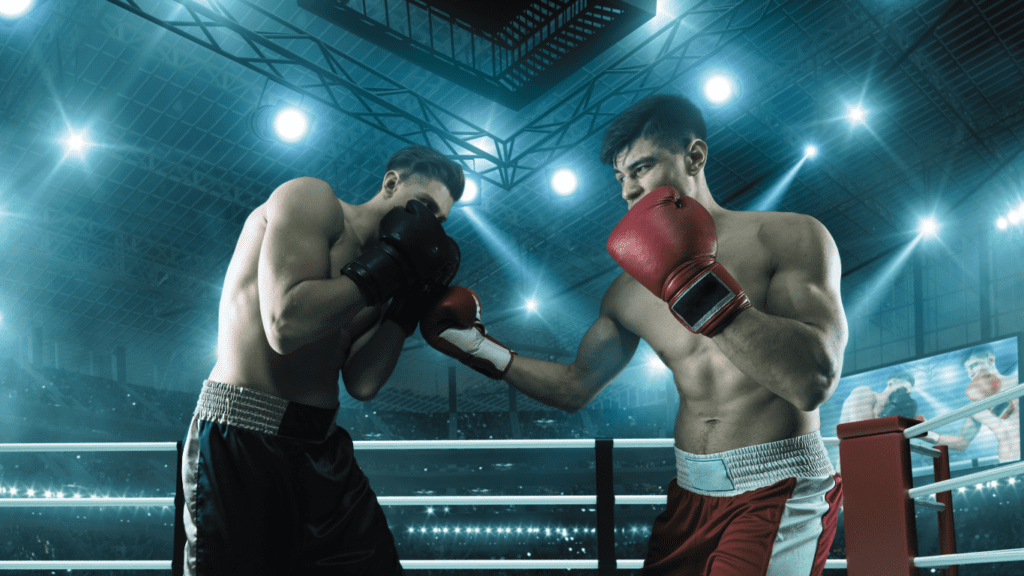
Imagine the sense of accomplishment you’ll feel after mastering a complex technique or completing an intense training session. Picture yourself becoming stronger, faster, and more confident with each class. These martial arts not only offer a path to physical fitness but also cultivate resilience, discipline, and a sense of community.
Starting something new can be daunting, but remember, every expert was once a beginner. The Best Martial Arts for Fitness are accessible to everyone, regardless of age or fitness level. The key is to find a style that resonates with you and aligns with your personal fitness goals. Whether you’re looking to lose weight, build muscle, improve your mental health, or learn self-defense, there is a martial art out there for you.
Don’t let misconceptions hold you back. Martial arts are not just for the young or the exceptionally fit; they are for anyone willing to take the first step. The journey may be challenging, but it is also incredibly rewarding. You’ll meet supportive instructors and fellow students who will encourage you along the way. You’ll discover strengths you never knew you had and develop skills that will benefit you in all areas of your life.
As you consider taking up martial arts, think about what you want to achieve. Are you looking to improve your overall fitness? Do you want to learn self-defense techniques? Are you interested in joining a community of like-minded individuals? Whatever your reasons, know that martial arts can help you achieve your goals.
Take Action: Now is the time to take action. Look for local martial arts schools, attend a trial class, and see how it feels. Talk to instructors, ask questions, and find a program that fits your schedule and interests. Remember, the most important step is the first one.
Share Your Journey: We invite you to share your experiences with martial arts. Whether you’re just starting out or have been practicing for years, your story can inspire others. Leave a comment below or join our community discussions. Ask questions, seek advice, and connect with others who are on the same journey.
Further Reading: If you’re interested in learning more about martial arts and fitness, here are some recommended readings:
- “The Fighter’s Mind: Inside the Mental Game” by Sam Sheridan
- “Zen in the Martial Arts” by Joe Hyams
- “The Art of Expressing the Human Body” by Bruce Lee
- “Jiu-Jitsu University” by Saulo Ribeiro
- “Boxing Fitness: A Guide to Getting Fighting Fit” by Ian Oliver
These books offer insights into the mental and physical aspects of martial arts training, providing valuable tips and inspiration for your journey.
In conclusion, integrating martial arts into your fitness routine can be one of the most rewarding decisions you make. The Best Martial Arts for Fitness offer comprehensive workouts that enhance physical and mental health, provide practical self-defense skills, and foster a sense of community. Don’t wait any longer—take the first step today and explore the world of martial arts. Your journey to a healthier, more confident you begins now.


